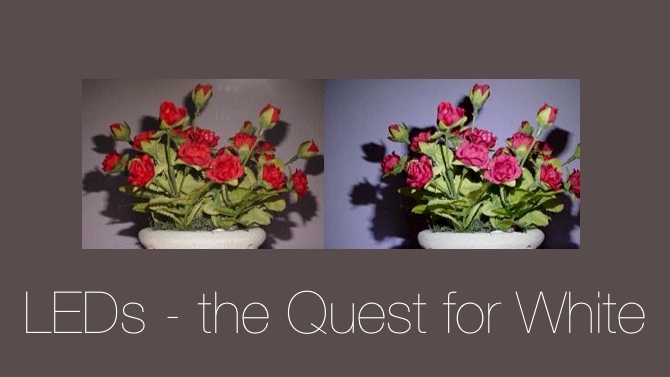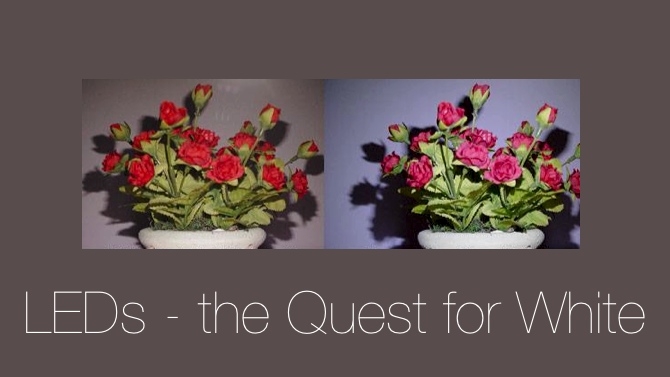
 The Quest for White
The Quest for White
Part 2 of our investigation into whether we can ever get good colour from modern lighting
The real-world result of all this is concern over colour rendering in fluorescent and LED light sources. Clustering red, green and blue LEDs to create white is, from a film and television camerawork perspective, more or less a nonstarter for anything other than colourful effects lighting. White LEDs do somewhat better, mainly because the majority of the output is not actually being created by an LED – they are simply blue LEDs, with a yellow-emitting phosphor on the front, the combination of which creates white light. The phosphor has a much wider output bandwidth than the LED, so colours from red to green are often well-illuminated. Anything between green and blue, however, may do less well, either being subject to the rather narrow blue output of the LED itself, or falling into the gap between the output of the phosphor and the LED. Blue-green to cyan hues are usually the most poorly-illuminated by LEDs.
Mitigation
Several mitigation techniques exist for these problems. Some LED light sources mix red, green, blue, amber or yellow emitters in with one or more varieties of white, although the output of the coloured emitters is still quite narrow and this technique may provide only partial relief. The very best results are generally achieved with a variety of different white LEDs which each use different phosphors, the variance in their output combining to produce a smooth, well-integrated spectrum with few deficiencies. Phosphor development for these applications is an ongoing area of complex research, and even the best devices, though quite usable, generally show the most deviation from tungsten or HMI results in the blue-green, purple and violet regions of a test chart.
There are products on the market which combine both techniques, with a combination of white emitters as well as red, green and blue colour mixing facilities. These are often promoted as having very good colour rendering, although it’s worth enquiring as to whether the colour tests were performed with just the white emitters running, or with the white plus the RGB as well, which would usually provoke poorer colour results with higher absolute brightness. You can't always have both.
Be realistic
Ultimately it’s possible to become too concerned by the science of this. HMI lighting which has run a lot of hours, fluorescent devices with the ballasts set up inappropriately, and even a poorly-manufactured tungsten light can produce output with wild colour variations from unit to unit. The world is full of very elementary and low-cost LED lighting of little sophistication, which is used daily for news and documentary with no problems whatsoever. That said, if you’re in the position of lighting a theatrical feature film which has spent huge sums of money outfitting an A-list star in a gown made of the finest fabrics, and if that gown happens to be a beautiful blue-green, caution, or at least extensive testing, is probably in order.
We are still working on RedShark's comments system. Meanwhile, if you'd like to respond to this article, please email me, the editor, at david.shapton@redsharknews.com. We'll publish the best comments.
Tags: Technology


Comments